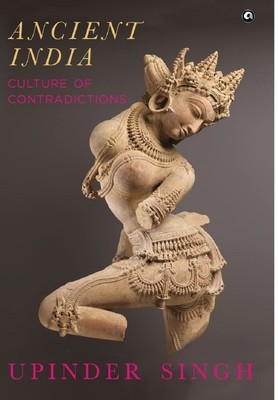
- We will send in 10–14 business days.
- Author: Upinder Singh
- Publisher: RUPA PUBLICATIONS INDIA PVT LTD
- ISBN-10: 9390652618
- ISBN-13: 9789390652617
- Format: 15.6 x 23.4 x 2.1 cm, kieti viršeliai
- Language: English
- SAVE -10% with code: EXTRA
Reviews
Description
Upinder Singh urges us to abandon simplistic stereotypes and instead think of ancient India in terms of the coexistence of five powerful contradictions-between social inequality and promises of universal salvation, the valorization of desire and detachment, goddess worship and misogyny, violence and non-violence, and religious debate and conflict. She does so using a vast array of sources including religious and philosophical texts, epics, poetry, plays, technical treatises, satire, biographies, and inscriptions, as well as the material and aesthetic evidence of archaeology and art from sites across the subcontinent. Singh's scholarly but highly accessible style, clear explanation, and balanced interpretations offer an understanding of the historian's craft and unravel the many threads of what we think of as ancient Indian culture. This is not a dead or forgotten past but one invoked in different contexts even today. Further, in spite of enormous historical changes over the centuries, the contradictions discussed here still remain.
EXTRA 10 % discount with code: EXTRA
The promotion ends in 23d.20:08:23
The discount code is valid when purchasing from 10 €. Discounts do not stack.
- Author: Upinder Singh
- Publisher: RUPA PUBLICATIONS INDIA PVT LTD
- ISBN-10: 9390652618
- ISBN-13: 9789390652617
- Format: 15.6 x 23.4 x 2.1 cm, kieti viršeliai
- Language: English English
Upinder Singh urges us to abandon simplistic stereotypes and instead think of ancient India in terms of the coexistence of five powerful contradictions-between social inequality and promises of universal salvation, the valorization of desire and detachment, goddess worship and misogyny, violence and non-violence, and religious debate and conflict. She does so using a vast array of sources including religious and philosophical texts, epics, poetry, plays, technical treatises, satire, biographies, and inscriptions, as well as the material and aesthetic evidence of archaeology and art from sites across the subcontinent. Singh's scholarly but highly accessible style, clear explanation, and balanced interpretations offer an understanding of the historian's craft and unravel the many threads of what we think of as ancient Indian culture. This is not a dead or forgotten past but one invoked in different contexts even today. Further, in spite of enormous historical changes over the centuries, the contradictions discussed here still remain.


Reviews